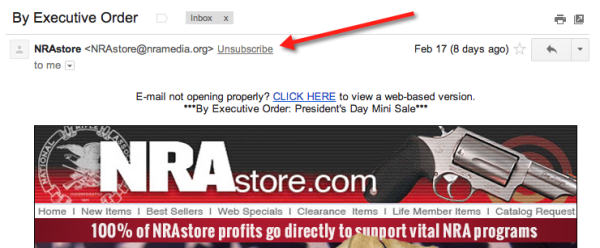6 Things To Watch For Better Gmail Deliverability
For most email marketers, reaching the inbox at Gmail is difficult, and trying to discover why emails aren’t reaching the inbox is downright confusing, if not nearly impossible. (Though Google is reportedly piloting a feedback loop program for email service providers (ESPs) that might help address this.) For now, Gmail’s Bulk Sender Guidelines offer general […]
For most email marketers, reaching the inbox at Gmail is difficult, and trying to discover why emails aren’t reaching the inbox is downright confusing, if not nearly impossible. (Though Google is reportedly piloting a feedback loop program for email service providers (ESPs) that might help address this.) For now, Gmail’s Bulk Sender Guidelines offer general advice for marketers sending to Gmail subscribers, but they lack specifics.
At Return Path, we recently analyzed hundreds of thousands of campaigns from thousands of senders to find out what marketers should be paying attention to.
1. URL Shorteners: URL shorteners are a clever way for spammers and phishers to hide links to spam and phishing sites; as a result, Google will block most of them if used in bulk mailings, especially Bit.ly.
2. Unsubscribes: Gmail had been allowing its users to unsubscribe from marketing emails when they clicked on “this is spam,” but only if the sender had included a list-unsubscribe in the header, which is a simple line in an email header with either an email address or a URL to unsubscribe from the email.
In the last week, however, Gmail announced a change in the way it presents the unsubscribe option. Users will soon see a Gmail “Unsubscribe” button at the top of promotional messages, which will work essentially the same way without framing the action as a spam complaint. Here are a couple of examples of what it looks like in the inbox:
To keep your unsubscribe handling from hurting inbox placement at Gmail, best practices remain largely the same. Most importantly, avoid using campaign-based unsubscribes.
Continually mailing to a person after they unsubscribed will have extremely negative consequences to your overall sending reputation. Marketers can have both an email address or unsubscribe page in the list-unsubscribe header, and, before this latest announcement, the best practice was to stick with the web form for Gmail for two reasons.
First, because subscribers appreciate the preference center and can unsubscribe only from campaigns they don’t want to receive, and second, because having too many variations (over three) of a list-unsubscribe header can be negative. The latter part may remain true, but before you switch away from using an email address in your Gmail unsubscribe header, wait to see Google’s recommendations -– this could change.
3. Spam Complaints: Gmail looks at complaints primarily from a campaign-by-campaign basis. Without an official feedback loop, measuring spam complaints at Gmail is difficult, if not impossible. One can look at the number of complaints coming through the list-unsubscribe mechanism mentioned above, or use subscriber panel data by third-parties to measure this.
Continually emailing someone who marked an email as spam won’t only cause future emails to land in spam, but may also have more far-reaching consequences and cause all emails to all subscribers to be delivered to spam.
4. Affiliate Marketing: While Gmail mentions affiliate marketing as a tactic to avoid, if you must send affiliate marketing, use the domain of the primary business and sender. For example, if Widgets.com is using an affiliate marketer, the affiliate marketer should use widgets.com as the mailing domain.
5. Blacklists: While Gmail doesn’t publicly note it uses blacklists, there is a high correlation of spam folder delivery when the sender is on a Real-Time Blacklist (RBL), or a DNS-based Blackhole List (DNSBL), which is based on domain names.
Spamhaus is one of the most widely used RBLs, and URIBL is one of the most widely used DNSBLs. Getting listed on one of these indicates problems with complaints and spam traps, which is likely caused from lack of permission, or lack of list hygiene over the years.
6. Promotions Tab: Forget about asking subscribers to move you out of the Promotions tab. Besides, very few subscribers actually move messages from the Promotions tab to the Primary inbox, and emails classified as promotions aren’t treated quite as heavy-handedly as those that land in Primary.

Past research from Return Path showed improved deliverability for marketing messages after the switch to the tabbed inbox, but for messages that aren’t classified as promotions, updates or social, spam complaint rates must be around .01% versus .1% for messages that are classified as promotions.
While Gmail likely measures many more things, these six items were the most common reasons we found for inbox failure. So next time you see your emails landing in the spam folder, make sure you’re not running afoul of these six things first.
Contributing authors are invited to create content for MarTech and are chosen for their expertise and contribution to the search community. Our contributors work under the oversight of the editorial staff and contributions are checked for quality and relevance to our readers. MarTech is owned by Semrush. Contributor was not asked to make any direct or indirect mentions of Semrush. The opinions they express are their own.
Related stories

